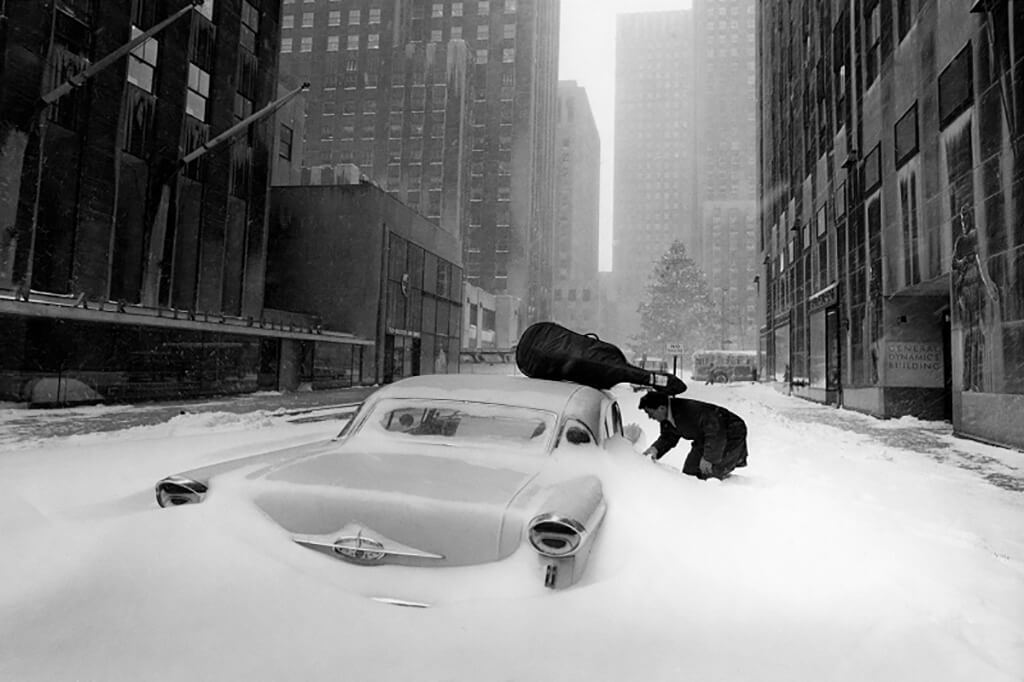
While Torontonians may not be overjoyed at the prospect of a winter storm this week, we dramatic classical music-loving types can at least enjoy its theatrical name: “STELLAAAAAAA.”
In honour of Marlon Brando and his timeless uttering of that delightful name (why don’t people name their kids Stella anymore, anyway??), here are a few musical gems to get you through this snowy week.
Vivaldi – The Four Seasons – Winter
Vivaldi’s pizzicato masterpiece illustrating the never-ending falling of snow, with its violent gusts of wind played by the solo violin throughout the first movement, will definitely remind Torontonians of the timelessness and circuitousness of snow falling. And, listeners would be hard-pressed to find any depiction of winter as achingly beautiful as the second movement’s longing theme. Maybe Vivaldi had more tolerance for winter than Torontonians.
Claude Debussy – Children’s Corner – The Snow is Dancing
In this piano piece, Debussy illustrates winter from a child’s perspective. Snow, illustrated by relentless sixteenth notes, circles round and round, varying in texture, weight, and modality. Dedicated to Debussy’s three-year-old daughter, snow has a haunting quality, just as it might have to children unfamiliar with the sensation with which we Canadians have become all too familiar.
Rimsky-Korsakov — The Snow Queen — Scene and Aria from Prologue
Mythological creatures interact with the real world in Rimsky-Korsakov’s take on the play by Alexander Ostrovsky, which reminds listeners of the magic and mystery of snow. The soprano sings an a capella melody which recurs throughout, before strings join her in luscious, unmistakably rich Russian music. And who, if anyone, knows as much about snow as Canadians? Russians, that’s for sure.
Vaughan-Williams – Sinfonia Antartica – First Movement
In 1947, Ralph Vaughan-Williams composed music for the the film, Scott of the Antarctic, later adapting most of the music into his seventh symphony, entitled Sinfonia antartica. The haunting and eerie modalities Vaughan-Williams uses in this symphony as well as the interspersing of a wind-like high soprano voice in the first movement creates an ominous portrayal of a winter setting, almost like a Lawren Harris painting. Those only familiar with Vaughan-Williams’ most famous works, The Lark Ascending and Songs of Travel will be certainly surprised listening to this piece.
Puccini — La bohème — Act Three
Act three of Giacomo Puccini’s masterpiece, La bohème, opens with sparse, pizzicato chords, which flutes and harp play in duet. You can almost feel the chill of winter in those empty fifths. When the harp finally plays its lush, tonal melody and we hear Musetta singing echoes of her waltz offstage, we are ushered into warmth, away from the snowy cold of France in the winter, late at night. “Fiocca la neve,” the chorus sings, or “snow flakes.” The rest of the act is heartbreaking as our ill-fated Mimi and Rodolfo resolve to stay together until winter is over. (Every Canadian can attest that breaking up before spring is simply impractical.)
Joni Mitchell — Second Fret Sets, 1966-1968 — Winter Lady
Because winter ladies need loving too, and home girl Joni Mitchell’s voice could warm up any Torontonian on a day like today.
For more LISZTS, click HERE.
#LUDWIGVAN
- LISTEN UP |Cherry Blossom Season Requires A Cherry Blossom Classical Playlist - May 11, 2018
- HANGOUTS | Carla Huhtanen’s Guide To Toronto - May 8, 2018
- HANGOUTS | Spending The Day With Jane Archibald - April 12, 2018



